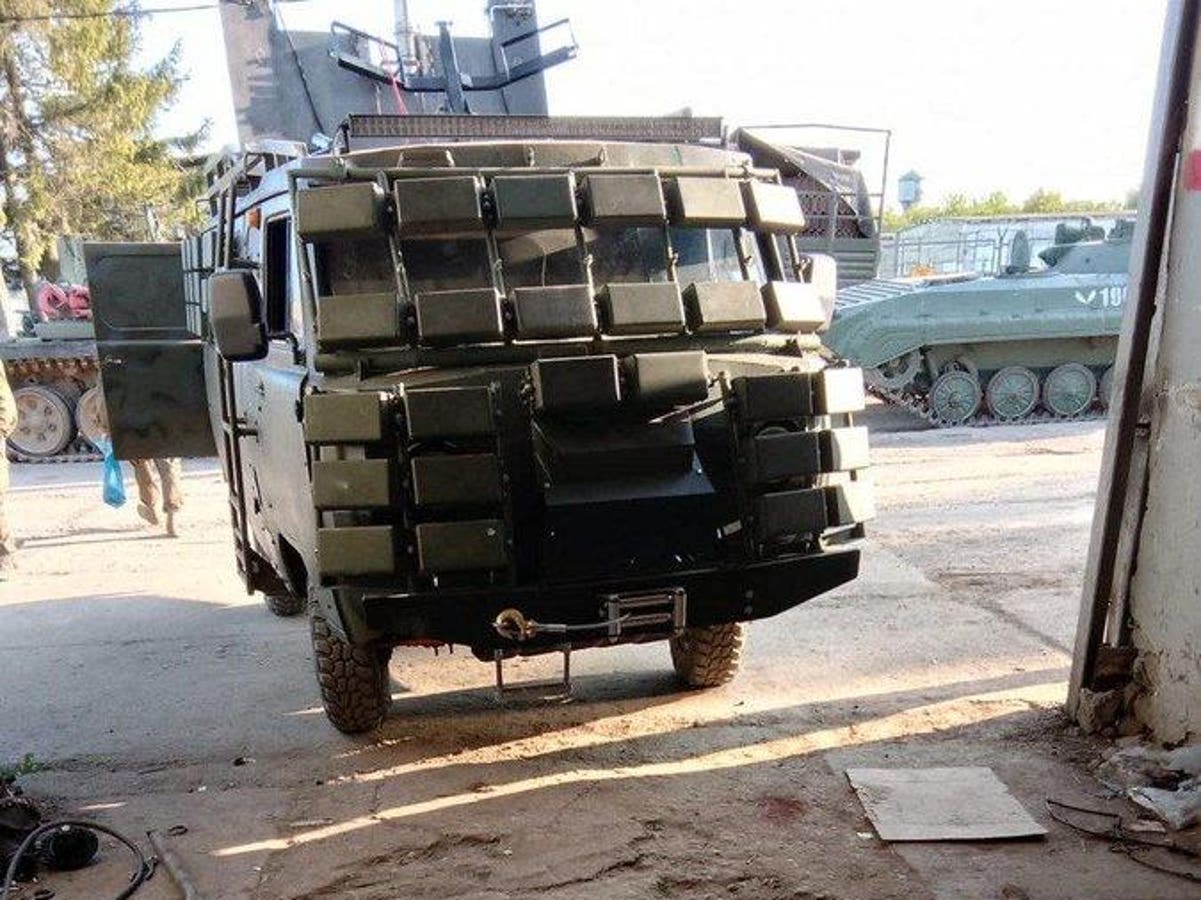Those Russian army Gaz-66 trucks wearing blocks of explosive reactive armor—explosive reactive armor that, when struck, would destroy the trucks as surely as an enemy shell would do—weren’t necessarily outliers.
A photo that circulated online back in August depicts a Russian UAZ-452 off-road van with Kontakt reactive armor blocks on its sides and, more shockingly, on its windshield.
Each block contains 500 grams of explosives. That’s more explosives than typically fill a hand-grenade. When an incoming round strikes an ERA block, it triggers the layers of explosives inside the block. They explode outward, partially deflecting the incoming blast.
But the vehicle wearing the ERA is subject to the same explosive force as the incoming round is. It’s not for no reason that competent armies only add ERA to vehicles with tens of millimeters of steel or composite armor, at a minimum. That means tanks and fighting vehicles, mostly.
Add ERA to a thin-skinned vehicle—a truck or mobile howitzer—and the reactive armor could wreck the very vehicle it’s supposed to protect.
It should go without saying that this potential for self-inflicted destruction is highest where the vehicle’s underlying protection is the lowest. A thin glass windshield, for example, is just about the worst place to install ERA.
If an enemy round triggers even one of the 12 Kontakt blocks on that UAZ-452’s windshield, the resulting defensive blast would create a lethal cloud of glass shards that could slice into tiny pieces anyone inside the van.
It’s obvious the crew of that UAZ-452 doesn’t understand how ERA works. It also is obvious why the crew is so desperate to add protection to its unarmored van. Desperately short of modern armored vehicles, the Russians are using vans, trucks and jeeps for more and more front-line tasks.
They haul supplies the last few tactical miles, transport the wounded and even support direct assaults in the case of Russia’s Chinese-made Desertcross 1000-3 all-terrain vehicles, which recently have been spotted with guns installed on their roofs.
But near to the front, these thin-skinned vehicles—or no-skinned, in the case of the Desertcross ATVs—are vulnerable to Ukrainian shells and drones. Of course their crews want extra protection. It’s a failure of the organizations that trained them, and the officers who lead them, that the crews think explosive armor is the answer to their drone problem.
For friends of a free Ukraine, these unwittingly booby-trapped Russian trucks might be darkly hilarious. Don’t mistake individual incompetence for strategic failure, however.
The Russian army despite its profound losses and the fraying of its training and leadership still is much bigger than the Ukrainian army is. It still can direct more firepower at any given sector of the front. It still can absorb many more losses than the Ukrainian army can do.
So the Russians still can win in Ukraine, whatever that means. Even when they’re riding in self-exploding trucks.
Read the full article here





